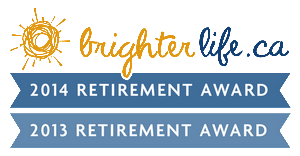If there ever was a generation who would put every resource known to man against the challenge of defeating ageing, it would be my generation. Of course, the deeply rooted desire in humans to stop or turn back the ageing process is as old as time itself. We have ample evidence of that in literature. From The Fountain to Youth to Peter Pan, there have been many efforts to just stubbornly say “I won't grow up” as though stamping one's foot and refusing to participate can actually keep us from growing older.
We have always had a love affair with youth. It is no doubt deeply rooted in our explosive teen and twenties years in which we became virtually the center of the universe as youth culture dominated the country if not the world in the sixties and seventies. That kind of thing can convince us that as a generation we would never grow old.
But, of course, we have grown old. But the interest in staying vibrant and active has resulted in the explosive growth of the exercise and diet industries. Because if we can’t stop ageing from happening, we can at least not LOOK old or act like it either.
From a medical standpoint, of course, there has never been an anti-ageing medicine or pill. Medical science has seen phenomenal changes and had breakthroughs in many areas of research and study. We are fully prepared to fund any medical work being done that might result in the elimination of ageing or at least in slowing its relentless onset. But medical science has not found any magic potion that could cause ageing to stop or to reverse its effects.
Even if ageing could be stopped at some level on the physical level, you have to wonder if that would be practical in light of ageing that affects the whole of what a person is. We know that we don’t just age in body, we age in attitudes, in maturity and in our ambition and how we view our goals in life. This has as much to do with the cycles of life from youth to parenthood to middle age and then to retirement as it does with physical changes in our bodies.
For many, the question might be, “If science could make it possible for you to never age or die, would you even want that?” There is an intuitive knowledge in our hearts that we have a season to live on this earth and then its time to pass the torch to the next generation. Everything works on that cycle. You are defined by your place in life. So, if you are in your forties, being a parent or a spouse is considered the appropriate place to be. So too, at 70 or 80, we are expected to be wise grandma and/or granddad. Our behaviour in society, what we value and what we look for from others is expected to be driven by our age in life which is a subset of the ageing process.
If ageing was somehow defeated entirely, that entire cycle of life would have to be completely re-evaluated. If you knew you would live 200 years rather than 80 or 90 years, how would you plan your family, your career and your finances?
Thankfully, perhaps, ageing remains a constant. The good news is while we fight age with a passion, we are also capable of growing into our senior years with a lot to give back to society. So just as we have been had a huge impact on society through every other decade, when we accept that we are going to be part of that ageing process, we will be a great generation of grandmas and grandpas as well.
